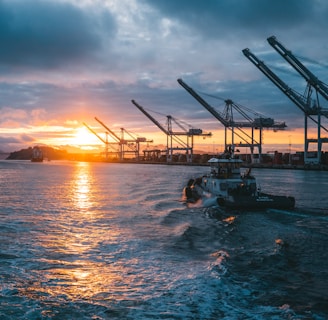China’s “Belt and Road” Initiative: Implications for International Trade Law and New Economic Impacts
CHINA
11/10/20243 min read


China’s “Belt and Road Initiative” (BRI), launched in 2013, is a vast infrastructure and investment project involving over 140 countries worldwide. Often called the “New Silk Road,” BRI is designed to boost China’s influence in global trade by constructing vital infrastructure along new trade routes. However, as BRI reshapes international commerce, it also raises complex questions for international trade law. This article examines the Belt and Road Initiative’s impact on trade law, the regional disputes it ignites, and the significant economic effects it brings.
What Is the Belt and Road Initiative?
The Belt and Road Initiative is a China-led plan to create extensive land and maritime trade routes connecting Asia, Europe, and Africa. BRI spans various infrastructure projects, including ports, railways, highways, and power plants, to streamline China’s trade connections with partner countries. However, while BRI opens new trade pathways, it also introduces pressing legal and economic challenges for participating nations and stakeholders.
New Challenges in International Trade Law and the Need for Regulation
As BRI infrastructure projects take shape across different countries, they highlight several legal and regulatory gaps in international trade law. Key issues include:
Investment Disputes: One of the most common legal concerns involves investment disputes. Many developing countries lack the robust legal frameworks to address disagreements with foreign investors. This underscores the need for international arbitration processes and efficient dispute resolution mechanisms to protect investor rights and promote smoother trade relations.
Environmental and Human Rights Violations: BRI projects often attract criticism for their environmental impacts. For example, infrastructure developments can lead to deforestation, disrupt local ecosystems, and impact communities’ lives. Consequently, BRI reinforces the need for stronger environmental protection laws and human rights compliance to safeguard affected regions.
Transparency and Corruption Concerns: The financial and operational opacity surrounding BRI projects can lead to allegations of corruption. Transparency standards in international trade law require revision to ensure that projects under initiatives like BRI meet clear and ethical funding and operational benchmarks.
Regional Disputes and Jurisdictional Challenges
The BRI spans numerous regions and, in some cases, triggers disputes over maritime borders, natural resources, and land claims. Such disagreements are common in Southeast Asia and Africa, where BRI projects often intersect with local sovereignty issues. These conflicts raise questions about legal jurisdiction, such as which country’s laws should apply or which court has authority over disputes.
Arbitration and Alternative Dispute Resolution Mechanisms: China promotes international arbitration centers to handle BRI-related disputes. However, concerns persist among some countries regarding the effectiveness and neutrality of local courts, highlighting the need for reliable alternative dispute resolution mechanisms in BRI-related cases.
Economic Impacts and Financial Risks
For many countries, BRI presents economic opportunities but also brings financial risks. Developing countries, in particular, look to BRI investments to fuel economic growth but may find themselves burdened by debt in financing these projects.
Debt Trap Diplomacy Risks: Chinese banks provide most BRI project financing, which can lead to high levels of debt for some countries, creating strategic dependencies on China—a phenomenon referred to as “debt trap diplomacy.” This underscores the need for international financial oversight and credit regulation to prevent unsustainable debt levels.
New Trade Routes and Competition: By creating direct trade routes between Asia and Europe, BRI lowers logistics costs and accelerates trade flows. However, the emergence of these new routes may intensify trade competition between countries, potentially leading to trade disputes. International regulatory bodies such as the World Trade Organization (WTO) will likely play an increasingly important role in managing this competition.
Expected Legal Developments in International Trade
As BRI continues to expand, it will undoubtedly shape the future of international trade law. Key developments to anticipate include:
New Trade Agreements: China is establishing trade agreements with BRI countries to ensure smooth project implementation. These agreements are expected to close regulatory gaps and provide enhanced protection for international investments.
Environmental and Social Responsibility Obligations: With growing global pressure, BRI projects may soon be subject to stricter environmental and social responsibility standards. Regulations on corporate environmental accountability and social impact assessments could support the initiative’s sustainability and reduce negative impacts.
New Arbitration Centers and Dispute Resolution Hubs: China has plans to develop its own arbitration centers for resolving BRI disputes. However, the neutrality and acceptance of these centers by other countries remain topics of debate in the international legal community.
Conclusion
The Belt and Road Initiative does not just amplify China’s role in global trade but also challenges international trade law with new complexities. Investment disputes, environmental and human rights concerns, financial risks, and increased trade competition demand legal scrutiny to foster a sustainable, transparent, and equitable trade environment.
For BRI to achieve its long-term goals, all stakeholders must prioritize international cooperation and responsible regulation. The anticipated regulatory developments within the BRI framework will have profound implications for international trade law, setting new standards and expectations in the evolving landscape of global commerce.
